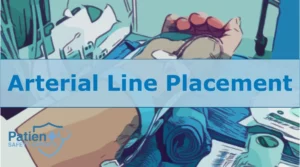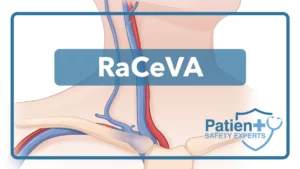Sepsis is one of the most challenging medical conditions facing our hospitals today. Sepsis occurs in less than 10% of our hospitalized patients, but it contributes to as many as half of all hospital deaths. Building a Sepsis Calendar that helps your organization stay on top of important drivers of sepsis outcomes is critical to becoming a high-performance organization.
What is a Sepsis Calendar?
A sepsis calendar is a version of a quality calendar that is geared specifically for sepsis. If you are a small organization, sepsis likely fits well into your normal quality calendar. Still, for big organizations, sepsis needs its own focus to improve your outcomes in a meaningful way.
If you want to learn more about Quality Calendars, please see our post: How to Start a Quality Calendar to Improve Outcomes and Save time.
A Sepsis Quality Calendar takes the drivers of high-quality sepsis program and adds them to a structure to allow you to review them on a regular basis.
Structure Drives Outcomes
There are more good ideas than time to pursue them is an adage that is true in business and quality. If you have found that you results don’t represent the effort you are putting into your sepsis program then its time to reassess where you are putting your time and energy.
Good sepsis outcomes are driven by a few well know drivers that are easy to identify but difficult to execute on a consistent day to day basis.
Locally, to bridge this knowing – doing gap, the program managers have to schedule time in the busy workday to specifically address these known drivers.
From a system perspective, your system has to review these drivers on a regular basis to ensure that all your locations are looking at each of these drivers on a regular basis.
Building the daily and weekly structure is what drives good outcomes.
If you can’t do it on a day to day basis, what makes you think you can make improvements over the course of a year?
What does Good Structure Look Like?
Good structure has some tasks that must occur daily, some tasks that must occur weekly and some that occur monthly. Anything task scheduled less frequently than monthly is clearly not a priority and will not get the focus needed to improve.
Examples of daily tasks are Items such as:
- Implementation of Sepsis Bundles by the bedside clinicians. Everything else in the program is designed to optimize this work.
- Timely response to sepsis alerts if your organization uses them.
- Review of the alerts from the prior day and provide feedback to clinicians when bundle compliance was not met.
Examples of weekly tasks Include:
- Aggregation of data on Sepsis bundle completion from the prior week.
- Review of obstacles to bundle completion from the prior week and identification of changes in structure or process needed to improve them.
Examples of monthly tasks Include:
- Sharing data with key stakeholders
- Reviewing obstacles and escalation if needed to resolve
Role Responsibility with the Calendar:
Part of good outcomes is clear roles and responsibilities. If sepsis is everyone’s’ job then it’s no-one’s job. Sure, everyone plays a role in good outcomes but when it comes to your sepsis quality calendar, each of the tasks needs to have a clear owner.
You define those roles and responsibilities by having a clear team structure.
Examples of Sepsis Team structure are:
Bedside clinicians:
- implement sepsis bundles and provide clinical care of the patient
- receive feedback with regards to bundle completion
- Follow outcomes and connect how bundle completions save lives.
Sepsis program Coordiantors
- provide feedback on bundle compliance
- organize and maintain the quality calendar
- run weekly meetings
Sepsis Physician Champion
- provides feedback on sepsis outcomes to physicians
- presents and shares the data with key stakeholders including administration and physician colleagues
Adding Sepsis Drivers to a System Quality Calendar
This step will not apply to most people but its a key step for anyone running a system sepsis program.











